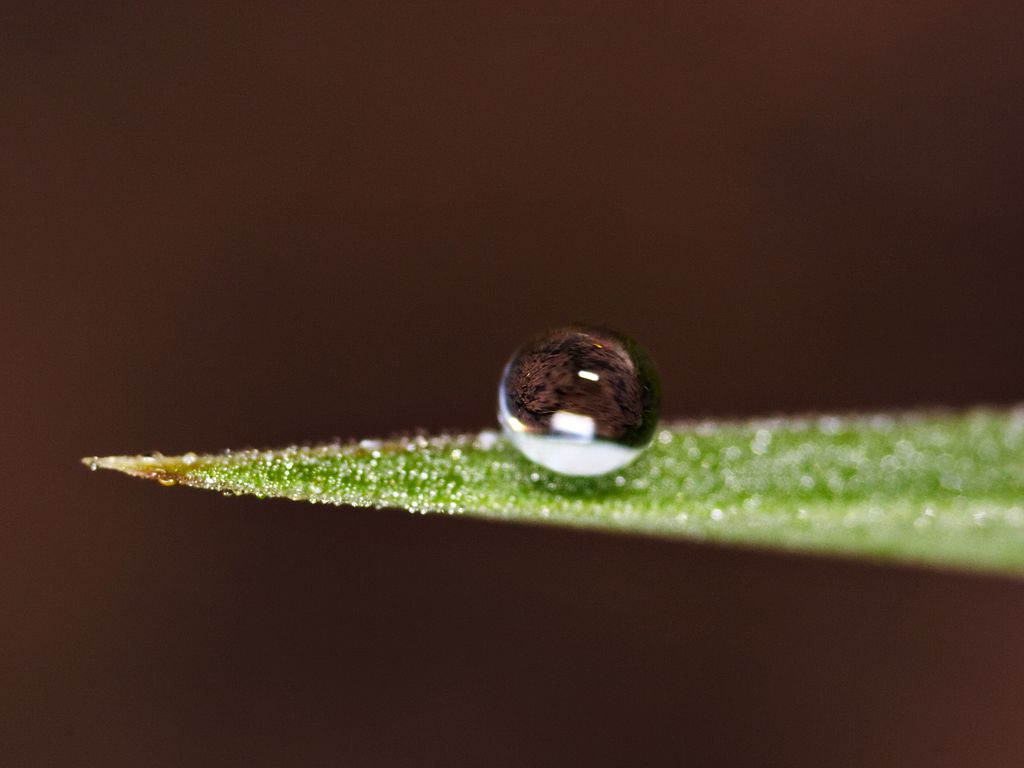Superhydrophobic Material
Researchers at the University of Rochester were recently featured in the news for creating a super-hydrophobic metal using a high-powered laser. It is the perfect scientific news story — shiny metals, slow motion water droplets, lasers — but the real world implications of this story are also very exciting.
The idea behind the experiment has been observed in nature for over 2000 years. The “lotus effect” refers to the self-cleaning mechanism on the flower’s leaves that results from its superhydrophobic nature. Two mechanisms play major roles in this phenomenon: the chemistry of the plant’s waxy cuticle and the micro-scale structures that roughen the leaves’ surface.
Though both are important in creating the lotus effect, the highly structured surface of the leaf has been of more interest to scientists recently because of the possibilities it holds for creating superhydrophobic material that doesn’t rely on the traditional waterproof coatings.
The surface of the leaves is composed first of mound-like structures, measuring only a few micrometers tall, and then by a complete covering of nano-scale hair-like projections covering the surface of the leaf. Visually, it is like the difference between a slightly deflated beach ball on the ground versus an upside-down grapefruit half.

This roughness allows the water to only come in contact with the “peaks” created by these structures, allowing it a much smaller surface to adhere to. Air is trapped in the “valleys,” preventing the water from coming in contact with and adhering to that part of the surface.
Scientists at the University of Rochester decided to attempt to mimic this pattern in a variety of metals using a super-powerful femtosecond laser. According to the University’s website, this laser, “lasts on the order of a quadrillionth of a second but reaches a peak power equivalent to that of the entire power grid of North America during its short burst.”
Its precision and power allowed the scientists to create the microstructures behind the lotus effect on platinum, titanium, and brass. This study was also the first to demonstrate this method of creating super-hydrophobicity in conjunction with dramatically increased light absorption on the surface of the different materials tested.
The results are striking. One measure of hydrophobicity is the tilt angle, which is the amount that a surface has to be tipped from a completely horizontal position before water will slide off of it. Teflon, a widely used hydrophobic material found commonly in kitchenware, is considered a hydrophobic surface with a tilt angle of about 70 degrees.

Video Credit: University of Rochester
The super-hydrophobic material created by the researchers has a tilt angle of less than five degrees when placed on the surface. When dropped on the surface of the material, water literally bounces off, maintaining 30 percent of its kinetic energy with each bounce. The best part? All of these are intrinsic properties to these materials, meaning that there is no coating that could peel off, or cover that must remain on to ensure the hydrophobicity.
This discovery has many exciting potential applications. Superhydrophobicity gives rise to many other highly desirable traits such as anti-icing, anti-corrosion, and low flow-resistance. The anti-icing aspects have already begun to turn the heads of airplane engineers, especially for use on aircraft wings, while flow-resistance could be applied to many aspects of underwater crafts.
One of the most exciting applications, however, is the self-cleaning aspect of superhydrophobic material. As water interacts with the surface of the material, its polar nature allows it to attract and adhere to dirt, microbes, and other material that may accumulate. The superhydrophobic nature of the object, however, prevents the water from sticking to the surface, instead rolling off along with all of the undesirable material that it has amassed.
On top of this, many bacteria and molds that typically create health concerns require water to grow in the first place. Because of this, superhydrophobic material has the potential to advance human sanitation systems, especially in those areas that have less access to water for sanitation needs.
Chunlei Guo, one of the head researchers on this project, stated that this technology could be applied to the creation of “toilets that require little to no water, but still stay clean and dry.”
As of right now, this application, as well as many others, is still far off. The material is still incredibly time-consuming to produce, taking about an hour to pattern one square inch of material. It is also prohibitively expensive, especially for sanitation system applications. As the technology continues to develop, however, one of the research priorities will be to speed up the patterning process and expand the catalogue of materials that this technique can be applied to.
Other applications of these micro- and nano-patterning techniques are also being explored, with promising applications for superhydrophillicity and heightened light-absorption in a variety of materials as well.
Rachel Stoddard, Biology 2017